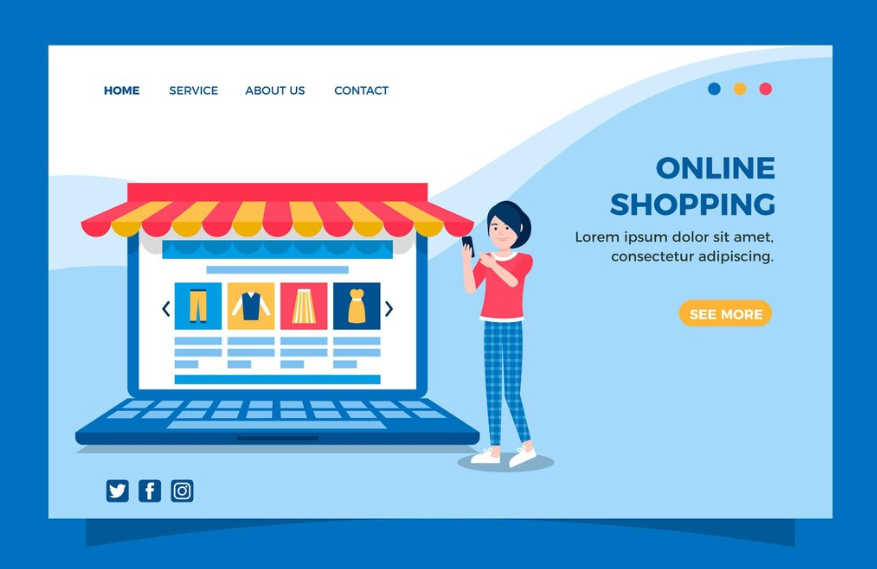In today’s digital era, launching an online store is one of the most effective ways to achieve financial independence and build a scalable business. Whether you’re selling physical goods, digital products, or services, an online store empowers you to reach customers worldwide. Here’s your comprehensive guide to building a successful online store and taking control of your entrepreneurial journey.
1. Why Start an Online Store?
1.1 Flexibility and Independence
- Work from anywhere and set your own schedule.
- Scale your business without the limitations of a physical store.
1.2 Low Startup Costs
- Avoid expenses like rent and utilities associated with brick-and-mortar stores.
- Leverage affordable tools and platforms to get started.
1.3 Unlimited Growth Potential
- Reach a global audience, increasing your earning potential.
- Expand product offerings as your business grows.
2. Steps to Build an Online Store
2.1 Choose Your Niche
Identify a specific market or product category where you can excel. Tips for selecting a niche:
- Solve a problem or address a specific need.
- Research trends using tools like Google Trends and Amazon Best Sellers.
- Validate your idea by assessing competition and demand.
2.2 Select an E-Commerce Platform
The platform you choose will be the foundation of your online store. Popular options include:
- Shopify: User-friendly with powerful features for beginners and pros.
- WooCommerce: A WordPress plugin offering flexibility and control.
- BigCommerce: Scalable for growing businesses.
2.3 Purchase a Domain Name
- Choose a domain that reflects your brand and is easy to remember.
- Use domain registrars like Namecheap or GoDaddy to secure your desired name.
2.4 Design Your Store
A visually appealing and user-friendly design is essential for success. Focus on:
- Themes: Pick a responsive theme that works on all devices.
- Navigation: Ensure intuitive menus and clear categories.
- Branding: Use consistent colors, fonts, and logos to establish your identity.
3. Adding Products to Your Store
3.1 Product Descriptions
- Write clear, compelling descriptions that highlight benefits and features.
- Incorporate relevant keywords to improve search engine visibility.
3.2 High-Quality Images and Videos
- Use professional images that showcase your products.
- Include videos or 360-degree views for a better customer experience.
3.3 Pricing Strategy
- Research competitors to set competitive prices.
- Consider offering discounts, bundles, or free shipping to attract customers.
4. Payment and Shipping Solutions
4.1 Payment Gateways
Enable secure and convenient transactions with options like:
- PayPal
- Stripe
- Square
4.2 Shipping Options
- Provide clear shipping timelines and costs.
- Offer multiple options like standard, expedited, and free shipping.
- Consider integrating with shipping solutions like ShipStation or EasyPost.
5. Marketing Your Online Store
5.1 Search Engine Optimization (SEO)
- Optimize product pages with targeted keywords.
- Use meta descriptions and alt text for images.
5.2 Social Media Marketing
- Promote your store on platforms like Instagram, Facebook, and Pinterest.
- Leverage paid ads to reach your target audience.
5.3 Email Marketing
- Build a mailing list to share promotions and new arrivals.
- Send personalized recommendations to improve conversions.
5.4 Content Marketing
- Create a blog to drive organic traffic.
- Write posts that address common questions or showcase how your products solve problems.
6. Tools to Simplify Your Journey
6.1 Website Builders
- Wix
- Squarespace
6.2 Analytics Tools
- Google Analytics
- Hotjar
6.3 Marketing Platforms
- Mailchimp for email campaigns.
- Hootsuite for social media scheduling.
7. Maintaining Your Online Store
7.1 Update Regularly
- Add new products and refresh outdated listings.
- Keep your design and content current with trends.
7.2 Monitor Performance
- Track sales, traffic, and customer behavior using analytics tools.
- Adjust strategies based on data-driven insights.
7.3 Customer Support
- Provide responsive support via live chat, email, or phone.
- Offer a comprehensive FAQ section to address common queries.
Conclusion
Building an online store is an empowering journey that can lead to financial independence and long-term success. By following this guide, you’ll be equipped to create a professional, customer-friendly store that stands out in today’s competitive e-commerce landscape. Start today, and turn your entrepreneurial dreams into reality!





